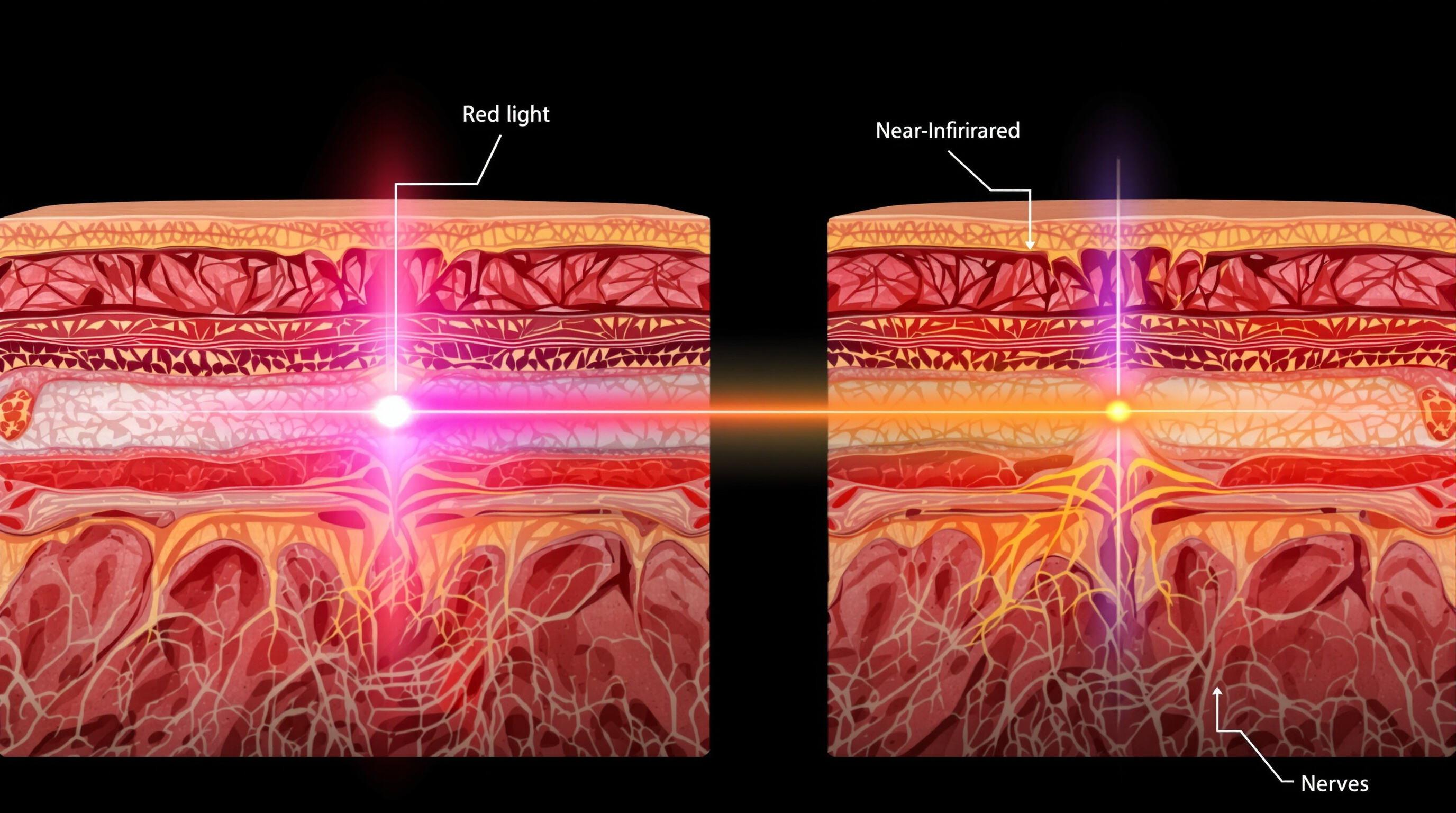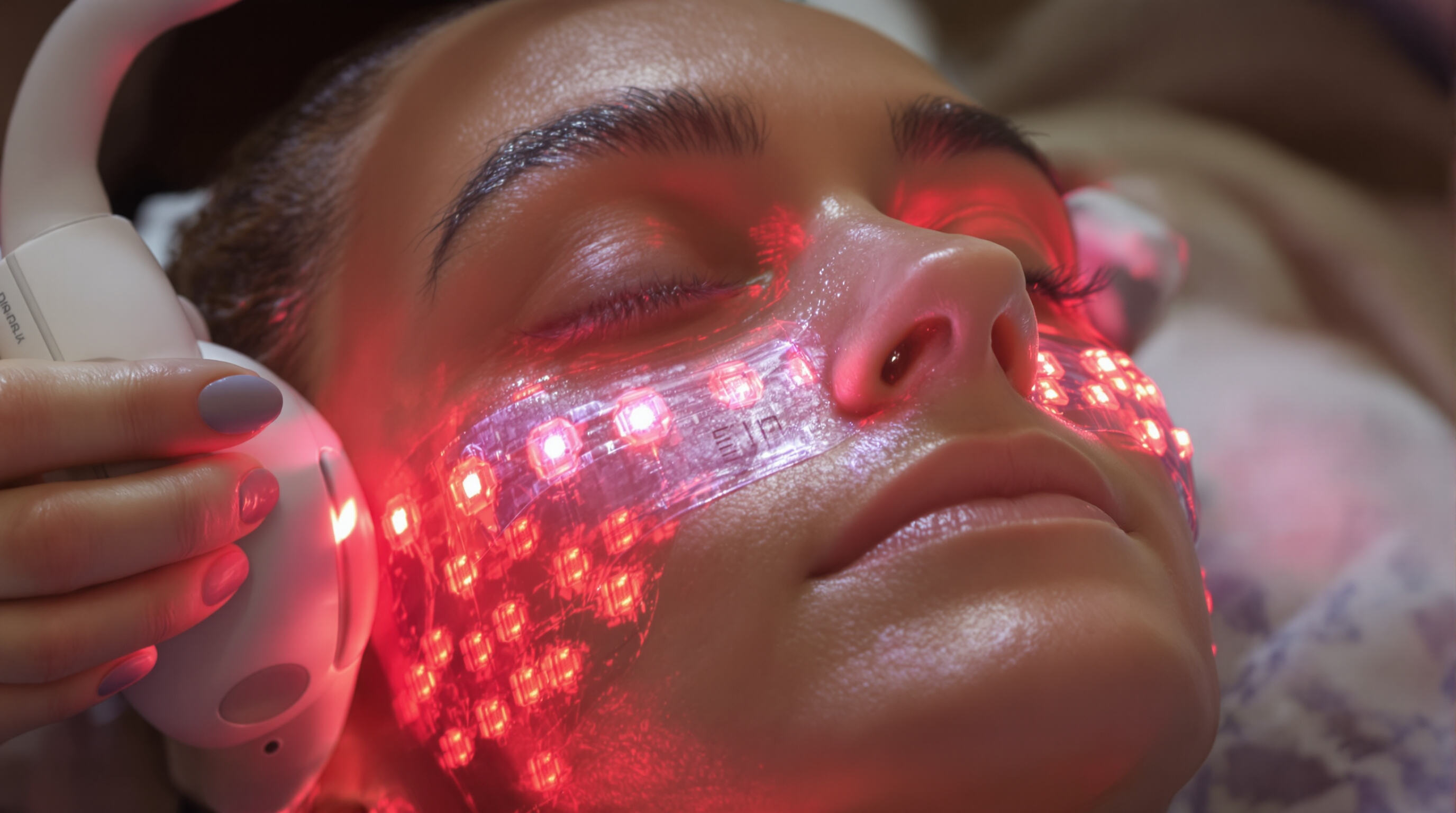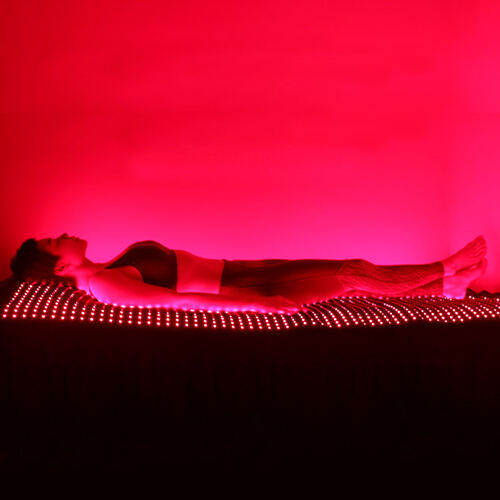Penetration Depth: How Red (630–660nm) and Near-Infrared (810–850nm) Light Interact with Tissue

Wavelength and Skin Penetration: Why Red Light Targets Superficial Layers
The wavelengths used in red light therapy range from around 630 to 660 nanometers, sitting right in the visible part of the light spectrum. These lights can actually get into the skin about 5 to maybe 10 millimeters deep, mostly reaching down to what we call the dermis layer. Why does this matter? Well, that's where those important fibroblast cells hang out, and they're basically responsible for making collagen and elastin in our skin. But here's something interesting: because red light gets scattered and absorbed quite a bit by things like hemoglobin and water molecules, most of it stays near the surface layers of the skin, specifically in the epidermis and just below in the upper dermis. That makes red light therapy especially good at tackling issues like rough skin texture, helping with acne problems, and calming down minor skin inflammations that sit closer to the surface rather than deeper in the tissues.
Why Near-Infrared Light Penetrates Deeper Into Muscles, Nerves, and Joints
Near infrared light in the range of 810 to 850 nanometers works differently because it has longer wavelengths. These wavelengths pass through surface tissues much better than other types of light since they scatter less and aren't absorbed as readily by water molecules in the body. As a result, this kind of light can actually reach depths between 30 and 50 millimeters, getting all the way down to muscles, joints, and even parts of the nervous system. When NIR light reaches these deeper tissues, it interacts with mitochondria, those tiny powerhouses inside cells. This interaction boosts ATP production, which helps speed up muscle recovery after workouts or injuries. People also report less joint pain when exposed to NIR therapy. And there's growing evidence that it can help manage inflammation in nerve tissue too. For these reasons, near infrared light therapy has become increasingly popular among athletes and individuals dealing with chronic pain conditions affecting bones, muscles, or nerves.
Comparative Tissue Penetration: Visualizing Depth Differences Between 660nm and 850nm
The difference in tissue reach between red and NIR light is significant, as shown below:
| Wavelength | Light Type | Depth Reached | Primary Targets |
|---|---|---|---|
| 660 nm | Red Light | 5–10 mm | Dermis, superficial blood vessels |
| 850 nm | Near-Infrared Light | 30–50 mm | Muscles, joints, nerve bundles |
This contrast explains the clinical preference for 660nm in skin-focused treatments and 850nm for deep tissue repair. Devices that combine both wavelengths offer layered therapeutic benefits, simultaneously addressing surface and deep tissue concerns.
Cellular Mechanisms: ATP Production, Cytochrome c Oxidase, and Biological Effects
How Both Red and Near-Infrared Light Boost ATP Through Mitochondrial Stimulation
Red and near infrared light work together to give cells an energy boost by activating something called cytochrome c oxidase, which plays a big role in how mitochondria function. When these photons get absorbed, they actually help cut down on oxidative stress while ramping up ATP production by around 35% based on recent research from Nature in 2023. The 670nm wavelength seems particularly good at improving metabolism in older skin cells, whereas the 850nm version does better at boosting ATP levels deeper inside the body where muscles are located. With this extra cellular fuel comes faster tissue repair, which explains why so many sports teams and clinics now incorporate light therapy into their recovery protocols for athletes and patients alike.
Differences in Cellular Absorption: Why Cytochrome c Oxidase Responds Uniquely to Each Wavelength
The enzyme cytochrome c oxidase actually takes in both red and near infrared light through different molecular mechanisms. When we look at 660 nanometer wavelengths specifically, this tends to stimulate the copper parts within the enzyme complex, which makes it pretty good for things like skin level repairs and healing wounds on the surface. On the flip side, when using 850 nm light, there's interaction happening with those iron oxygen bonds inside cells, allowing much better penetration into tissues where nerves and joints reside. Studies have shown something interesting too: according to research from Hüttemann and colleagues back in 2012, the 850 nm light can produce about 20 percent more ATP molecules in deeper tissues compared to the shorter wavelength. This really highlights why getting the right wavelength matters so much depending on how deep we need to reach within the body for treatment effectiveness.
Modulation of Reactive Oxygen Species (ROS) and Inflammation at the Cellular Level
The two different wavelengths work on reactive oxygen species (ROS), which are basically molecules that serve as signals within our bodies under normal conditions but can actually cause harm if they get out of control. When it comes to red light, research shows it cuts down on those excess ROS levels in skin exposed to sunlight by around 40 percent, helping preserve collagen structures. Things work differently with near infrared light though. Instead of reducing ROS, this wavelength temporarily boosts them deeper inside tissues to kickstart certain anti-inflammatory processes like the NF-kappa B pathway. According to recent findings published in Biosignaling back in 2023, using both wavelengths together seems to manage these ROS levels better than just relying on one alone, clearing up oxidative stress issues about 25% quicker according to their tests. For people dealing with long term inflammation problems such as arthritis, combining these treatments appears to offer real advantages based on what we know so far about how these lights interact with biological systems.
Therapeutic Applications by Treatment Depth: Skin Health vs Deep Tissue Recovery
Red Light Therapy for Skin Rejuvenation, Wound Healing, and Collagen Synthesis
When we talk about red light therapy between 630 and 660 nanometers, what happens is that it gets absorbed right into our skin layers - specifically targeting those outer parts of the epidermis down to the upper dermis area. This process actually kickstarts fibroblasts working overtime and boosts collagen production naturally within the body. Studies indicate around 85 percent of the 660nm wavelength makes it all the way through to reach deeper skin tissues, which explains why people notice visible changes in their skin texture over time. Looking back at research from 2010 published in the Journal of Clinical Laser Medicine & Surgery, they found something pretty impressive: after just eight weeks of regular treatments, there was approximately a 31% boost in collagen density. Plus, wounds healed about 40% faster when exposed to these lights compared to standard care methods. Better blood flow throughout treated areas also helps regenerate damaged tissues, which is why many dermatologists now consider red light therapy as one of the key tools for rejuvenating skin without going under the knife.
Near-Infrared Therapy for Muscle Repair, Joint Pain, and Neuroinflammation
Near infrared light can penetrate about 30 to 50 millimeters into the body, reaching areas like skeletal muscles, synovial fluids around joints, and even peripheral nerves. Research indicates this light increases ATP production in deeper tissues by roughly 150 to 200 percent according to muscle biopsy findings, which helps cells repair themselves faster and cuts down on feelings of fatigue. Looking at clinical data, studies have found that when people use 850 nanometer wavelength light, their bodies produce significantly fewer inflammatory chemicals after exercise. For instance, levels of IL-6 and TNF-alpha drop by about 60 percent. People suffering from arthritis also report better joint movement, seeing improvements of around 35 percent mobility after sticking with treatment for about a month. All these benefits point to why many healthcare professionals now consider near infrared therapy an important tool for dealing with both muscle-skeleton pain issues and inflammation problems related to nerves.
Clinical Trend: Precision Wavelength Selection Based on Condition Depth and Tissue Target
Modern clinical practice increasingly relies on anatomical imaging and spectral analysis to match wavelength to tissue depth. Current guidelines recommend:
- 630–660nm for conditions affecting tissues less than 2 cm deep (e.g., acne, superficial burns)
- 810–850nm for targets beyond 3 cm (e.g., rotator cuff injuries, sciatic nerve irritation)
A multicenter trial involving 1,200 patients found this precision approach reduces treatment duration by 25% compared to fixed-wavelength systems, highlighting the shift toward personalized photobiomodulation protocols.
Synergistic Protocols: Combining Red and Near-Infrared Light for Enhanced Outcomes

Scientific Basis for Dual-Wavelength Treatments: Complementary Rather Than Redundant
The red spectrum at around 630 to 660 nanometers works together with near infrared light between 810 and 850 nm to target various tissue depths and cell processes. Red light helps with skin level healing and boosts collagen production on the surface, whereas the near infrared penetrates deeper into tissues to support cellular energy production and reduce inflammation. A study published in the Journal of Clinical Laser Medicine and Surgery found that using both wavelengths at once increases ATP levels by about 24 percent over just using one wavelength alone. This combination seems to have better overall results because each wavelength addresses different aspects of cellular function.
Case Study: Full-Face LED Therapy With 660nm + 850nm Improving Skin Texture and Firmness
In a recent study from 2023 involving 120 people, researchers found something interesting when they combined both 660nm red light and 850nm near infrared light. The results showed about 19% better improvements in how elastic the skin became compared to just using red light by itself. Participants got these treatments for ten minutes at a time, three days each week. What's really cool is that this combination approach actually boosted collagen levels (specifically types I and III) while also reducing those pesky inflammatory markers in the skin. So what does all this mean? Well, it looks like stacking different wavelengths of light doesn't just make skin look better on the surface, but actually helps rebuild the deeper layers of the dermis over time.
Industry Insight: Why Most Red Light Therapy Devices Integrate Both Wavelengths
Most current red light therapy gadgets actually combine red and near infrared LEDs because they work better together for different problems. Around 60 to 80 percent of long term health issues like arthritis pain or muscle soreness after workouts involve damage at multiple layers of tissue. That's why many people are turning to these dual wavelength systems which seem to cover more ground. The market is definitely moving this way too, as folks want something flexible enough to use at home without needing special training. And looking at research from recent years, about seven out of ten scientific papers since 2020 back up using both wavelengths together for better results overall.
FAQ
What is the typical penetration depth of red light therapy?
Red light therapy, using wavelengths around 630 to 660 nanometers, typically penetrates about 5 to 10 millimeters deep into the skin, primarily focusing on superficial layers like the dermis.
How does near infrared light therapy differ in penetration?
Near-infrared light therapy, with wavelengths of 810 to 850 nanometers, can reach depths between 30 and 50 millimeters, effectively targeting muscles, joints, and parts of the nervous system.
Why is dual-wavelength light therapy preferred?
Dual-wavelength therapy combines red and near-infrared light to simultaneously address surface and deep tissue concerns, enhancing ATP production, reducing inflammation, and optimizing overall therapeutic outcomes.
Can red and near-infrared light therapy improve skin conditions?
Yes, red light therapy can improve skin texture, wound healing, and collagen synthesis, while near-infrared therapy aids in muscle repair, joint pain reduction, and neuroinflammation relief.
Table of Contents
- Penetration Depth: How Red (630–660nm) and Near-Infrared (810–850nm) Light Interact with Tissue
- Cellular Mechanisms: ATP Production, Cytochrome c Oxidase, and Biological Effects
- Therapeutic Applications by Treatment Depth: Skin Health vs Deep Tissue Recovery
- Synergistic Protocols: Combining Red and Near-Infrared Light for Enhanced Outcomes
- FAQ

 EN
EN








































